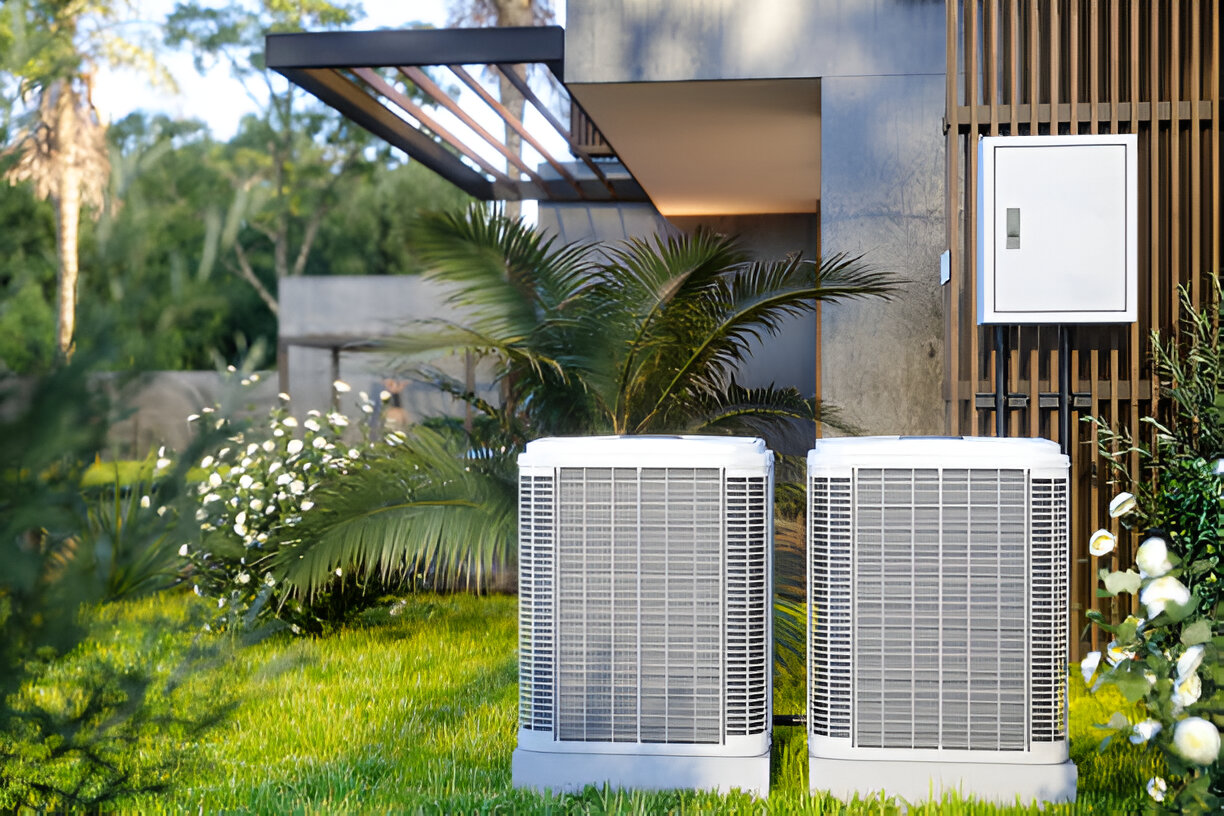HVAC Services in McDowell, AZ
In McDowell, AZ, reliable HVAC performance is essential. With long, intense summers, seasonal monsoon dust and humidity spikes, and cool winter evenings, homes here demand systems that are correctly sized, well-maintained, and optimized for desert conditions. Our full-service HVAC offerings cover system evaluation and sizing, professional installations, prompt repairs and replacements, preventative maintenance plans, indoor air quality improvements, and emergency response — all designed to keep your home comfortable, efficient, and safe year-round.

Why HVAC care matters in McDowell, AZ
- Extreme summer heat places continuous heavy load on air conditioners, increasing the likelihood of component wear and refrigerant issues.
- Monsoon season brings dust, pollen, and sudden humidity increases that reduce airflow and strain equipment.
- Sun-exposed roofs and minimal shading in desert neighborhoods raise cooling loads; undersized systems struggle to keep up.
- Proper maintenance improves reliability, lowers energy bills, and extends equipment life in an environment that accelerates wear.
Common HVAC issues in McDowell, AZ homes
- Insufficient cooling or long run times: Often caused by incorrect system sizing, low refrigerant, clogged coils, or poor airflow.
- Short cycling: Repeated on/off cycles that stress components — usually due to faulty thermostats, refrigerant problems, or improper sizing.
- Poor indoor air quality: Dust, pollen, and volatile organic compounds (VOCs) from the desert environment can cause allergies and odors.
- Frozen evaporator coils: Restricted airflow or low refrigerant can create ice buildup, especially under continuous high-demand conditions.
- Electrical failures and compressor faults: High heat and high run hours increase the risk of motor and capacitor failures.
- Duct leaks and insulation loss: Leaky ducts and uninsulated attic runs let conditioned air escape, reducing comfort and raising costs.
Full-service offerings and types of work
- System evaluation and accurate sizing: We perform a complete load assessment (room-by-room heat loss/gain) to recommend the right capacity. Proper sizing prevents both undersized systems that never reach setpoints and oversized units that short cycle.
- New installations and replacements: Equipment selection balances efficiency, durability, and home needs. Installations include proper refrigerant charge, matched components, and ductwork adjustments.
- Repairs and component-level service: Compressor, capacitor, fan motor, thermostat, refrigerant leak repair, and control board diagnostics and repairs are handled to industry standards.
- Preventative maintenance programs: Seasonal tune-ups focused on cleaning coils, checking refrigerant levels, testing electrical components, lubricating motors, verifying thermostat calibration, and replacing filters as needed.
- Indoor comfort and air quality improvements: High-efficiency filtration, UV germicidal lights, whole-house humidification/dehumidification strategies, and targeted ventilation upgrades.
- Emergency service procedures: Rapid triage, safety checks, temporary cooling solutions when possible, and prioritized repair scheduling during heat waves or monsoon-related failures.
How we diagnose and scope work
- Visual inspection of outdoor and indoor units, evaporator and condenser coils, refrigerant lines, and ductwork.
- Performance testing: temperature split measurements, system run-time analysis, airflow readings, and refrigerant pressure checks to confirm correct charge.
- Electrical safety checks: voltage, amperage, and component functionality testing to identify failing motors or control issues.
- Duct assessment: leakage testing and airflow balancing to identify efficiency losses or hot/cold spots.
- Written estimates and scope: Clear, itemized proposals include system options (repair vs replacement), efficiency ratings, expected outcomes, and a list of deliverables prior to any work.
Typical deliverables you can expect
- A written, itemized estimate with recommended options and the reasoning behind each recommendation.
- Load calculation and system sizing summary when proposing a new installation or replacement.
- Diagnostic test results (temperature differentials, refrigerant pressures, electrical readings) and photographs of findings when applicable.
- A safety and performance checklist completed post-service, confirming system operation and code-compliant installations.
- Maintenance reports showing completed tasks and suggested next steps for ongoing care.
Repair vs replacement — making the right decision
- Repair is appropriate when a single component has failed, the system is otherwise in good condition, and the repair restores reliable operation and efficiency.
- Replacement is often the better option when the system is more than 10–15 years old, requires frequent repairs, uses obsolete refrigerant, or demonstrates poor efficiency relative to current standards.
- In McDowell, choosing replacement can produce larger energy savings because systems sized and specified for desert climates (proper capacity, variable-speed compressors, high-efficiency coils) handle extreme heat more efficiently and last longer under heavy seasonal demand.
Preventative maintenance program benefits
- Reduced risk of mid-summer breakdowns during peak demand.
- Improved energy efficiency and lower utility bills through clean coils, correct refrigerant charge, and optimal airflow.
- Extended equipment life and preserved manufacturer warranties when maintenance is performed regularly.
- Priority scheduling and documented service history that simplifies future diagnostics and resale disclosure.
Indoor air quality and comfort strategies for desert homes
- Upgrade filtration to MERV-rated filters appropriate for your system to capture dust and allergens without choking airflow.
- Add whole-house dehumidification for monsoon months to prevent mold and improve comfort.
- Consider zoning or programmable thermostats to control different areas of a home more effectively, reducing wasted energy and improving comfort during temperature swings.
- Seal and insulate ducts, especially attic runs, to prevent conditioned air loss under high attic temperatures.
Emergency service and safety considerations
- During heat events or after monsoon storms, emergency procedures include immediate safety checks (electrical, refrigerant leak detection), temporary cooling strategies, and prioritized parts sourcing for fast repairs.
- All work follows safety standards and current codes to protect occupants and prevent repeat failures.
Final considerations
Investing in professionally performed HVAC evaluation, repair, and maintenance in McDowell, AZ protects comfort and reduces long-term costs. Proper system sizing, desert-aware equipment choices, routine maintenance, and indoor air quality upgrades address the unique challenges of Arizona heat and dust, delivering consistent performance when you need it most. Licensed and insured technicians certified to industry standards ensure workmanship and documented deliverables at every step, from initial estimate and diagnostic testing through final post-service checks.






